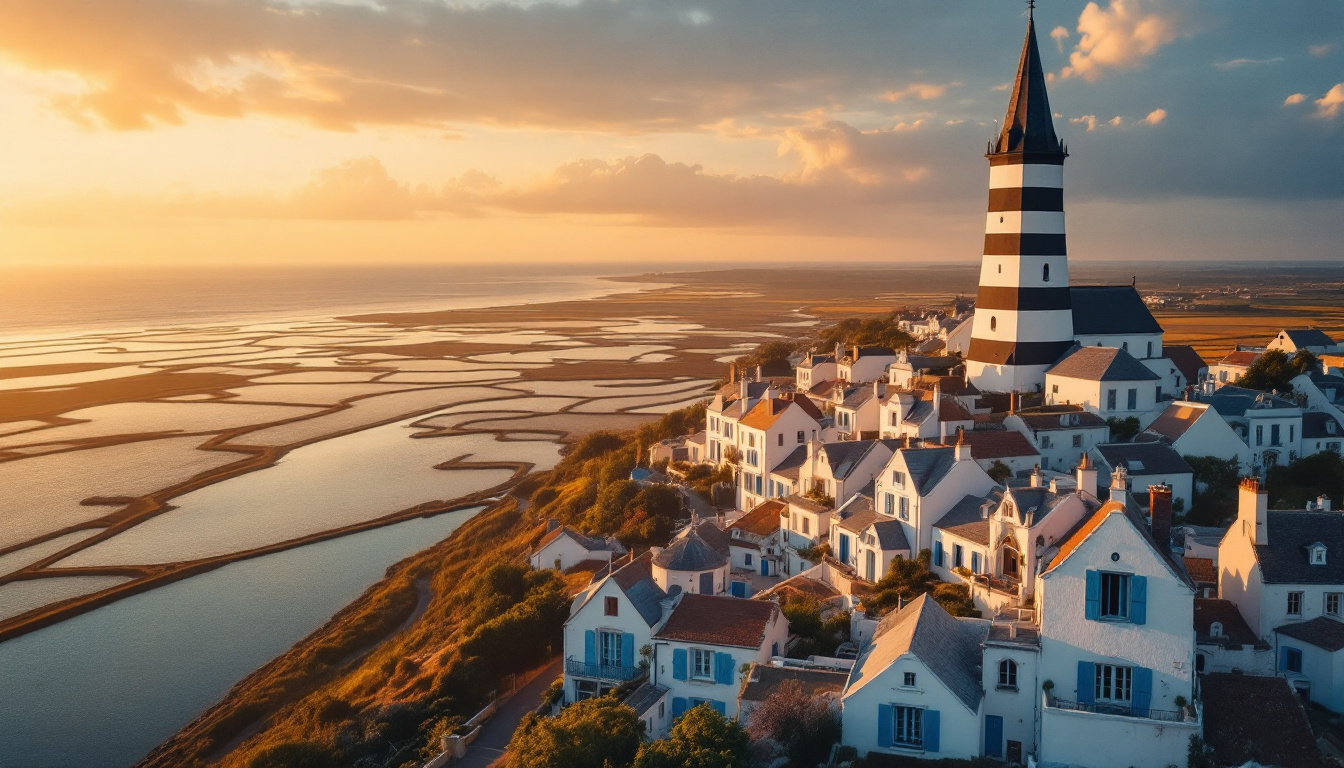France’s Atlantic coast harbors a secret village that rivals Santorini for whitewashed charm but without the crushing crowds. On the western edge of Île de Ré, Ars-en-Ré captivates visitors with its striking black and white church tower rising 42 meters above a pristine landscape where traditional salt farming continues much as it has for centuries.
The iconic beacon that guided sailors home
The Saint-Étienne church stands as Ars-en-Ré’s defining landmark, its distinctive striped bell tower once serving as a navigation aid for returning fishermen. This architectural marvel offers more than just Instagram moments—climb to the observation deck for panoramic views across salt marshes that stretch to the Atlantic horizon.
“Our tower has been guiding sailors home since the 15th century,” explains Marie Laurent, local historian. “The black and white stripes were specifically designed to be visible against both clear blue skies and stormy weather.”
A salt-making tradition that shaped the landscape
The village’s identity remains deeply connected to salt production, with geometric salt pans surrounding Ars-en-Ré creating a mesmerizing patchwork visible from elevated viewpoints. These salt marshes not only produce fleur de sel (prized by chefs worldwide) but host remarkable biodiversity in the Lilleau des Niges Nature Reserve.
Morning walks along raised pathways between salt pans offer unforgettable experiences as mist rises from warming water, creating an ethereal landscape where salt workers harvest using traditional wooden tools. Time your visit for late afternoon when raking activities are most visible.
Where whitewashed streets transport you to another era
Wandering through Ars-en-Ré feels like stepping into a meticulously preserved seaside village. Narrow cobblestone streets lined with immaculate white houses featuring blue-gray shutters create a visual harmony that’s increasingly rare in tourist destinations. The village earned its place among “Les Plus Beaux Villages de France” (Most Beautiful Villages in France) for good reason.
Unlike overcrowded Mediterranean destinations, Ars-en-Ré maintains authentic coastal character, particularly during spring and autumn when locals reclaim their village.
The hidden port where Atlantic rhythms dictate daily life
Rather than opening directly to the ocean, Ars-en-Ré’s small port faces the protected Fier d’Ars bay—an 800-hectare inland sea that transforms dramatically with tides. At high tide, traditional fishing boats float peacefully; at low tide, mudflats reveal ancient oyster beds and foraging birds.
“The tides govern everything here,” says Jean-Pierre Moreau, third-generation fisherman. “We’ve adapted our lives to their rhythm for centuries, which perhaps explains why we resist rushing into modernity like other tourist places.”
Sunrise salt gatherers and golden light photographers
Photography enthusiasts discover in Ars-en-Ré what I found by accident in Iceland’s winter landscape—lighting conditions that transform ordinary scenes into extraordinary images. Early risers witness salt workers silhouetted against dawn light, while sunset photographers capture the church tower reflection in still waters.
The village offers more authentic experiences than you’ll find in Morocco’s tourist-packed medinas or Texas’s hidden coastal treasures.
Beyond beaches: authentic maritime culture preserved
Unlike neighboring Saint-Martin-de-Ré with its fortress tourism, Ars-en-Ré preserves working maritime traditions. Visit the small boat-building workshop where wooden vessels are still crafted by hand, or explore salt worker’s cottages with their distinctive architectural elements designed for harsh coastal conditions.
The village presents a cultural authenticity comparable to remote island communities where traditional practices haven’t yet been staged for tourists.
Ars-en-Ré doesn’t just offer escape from modern chaos—it provides immersion in a coastal village where salt harvesting, fishing, and maritime traditions continue authentically. When evening falls and Atlantic light bathes whitewashed walls in golden hues, you’ll understand why artists have been capturing this village’s timeless appeal for centuries. In Ars-en-Ré, France preserves what much of the Mediterranean has sacrificed to mass tourism—genuine coastal village life continuing as it has for generations.
